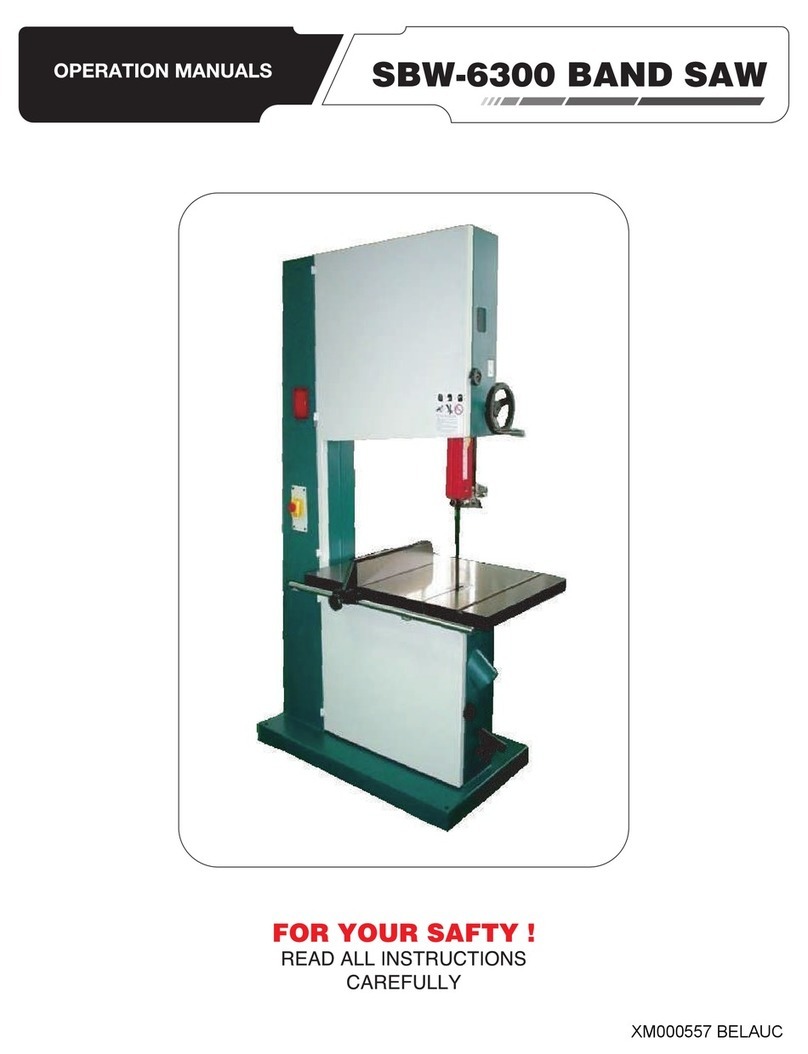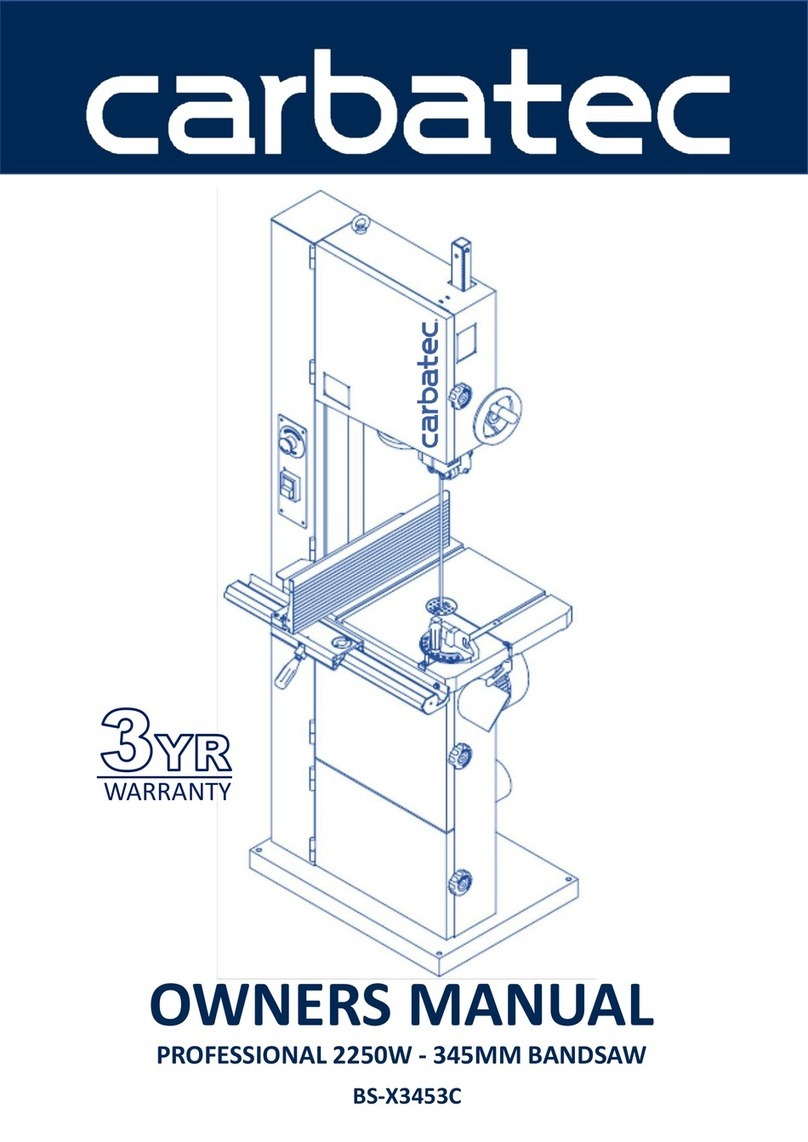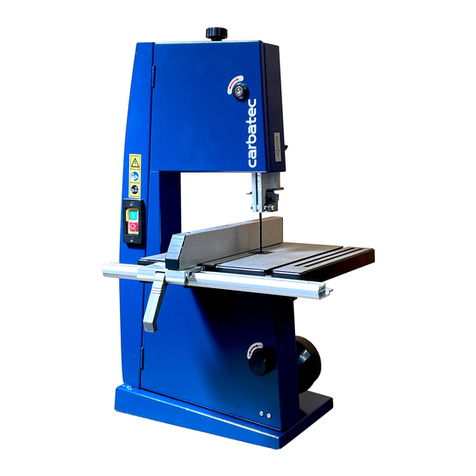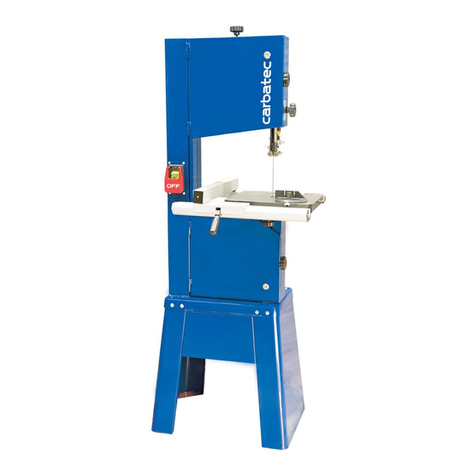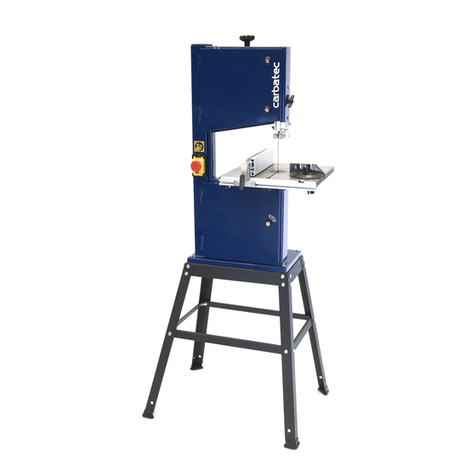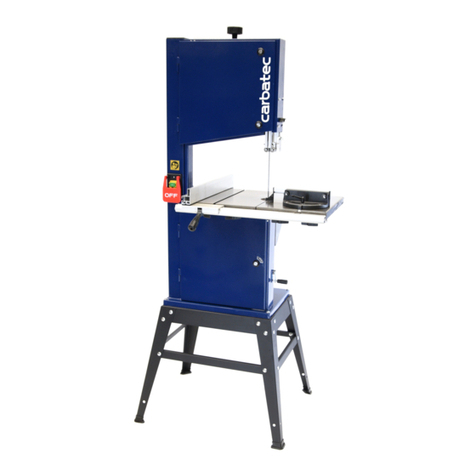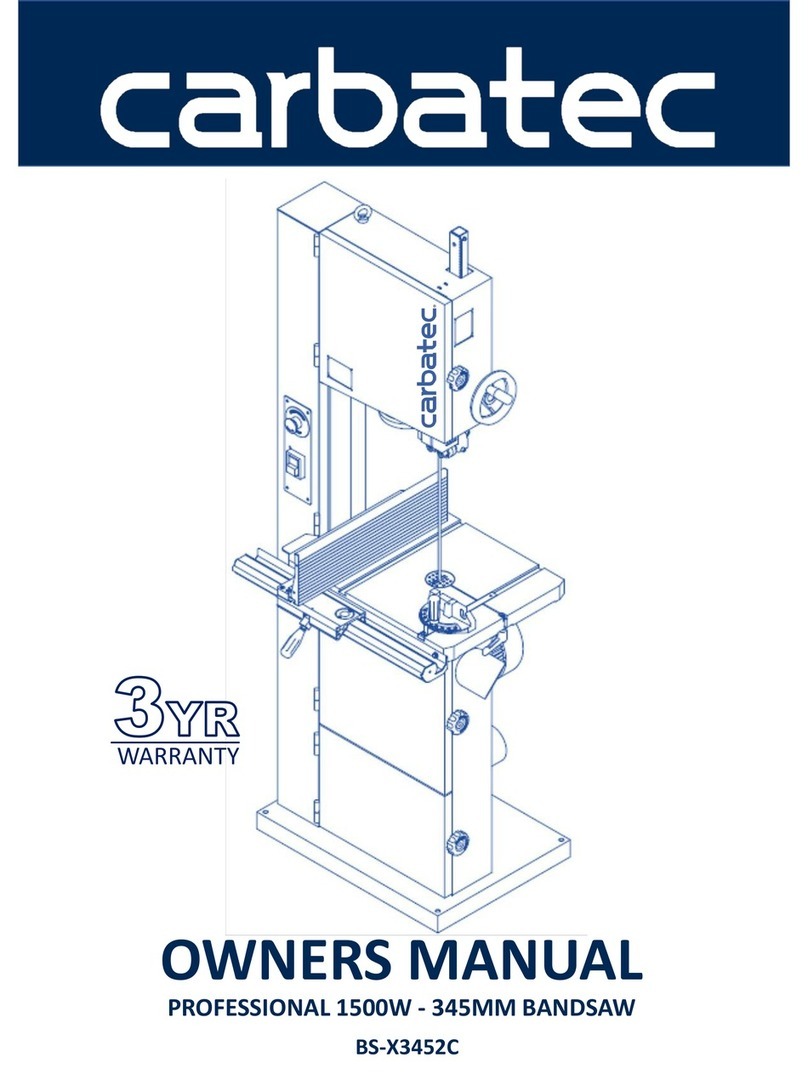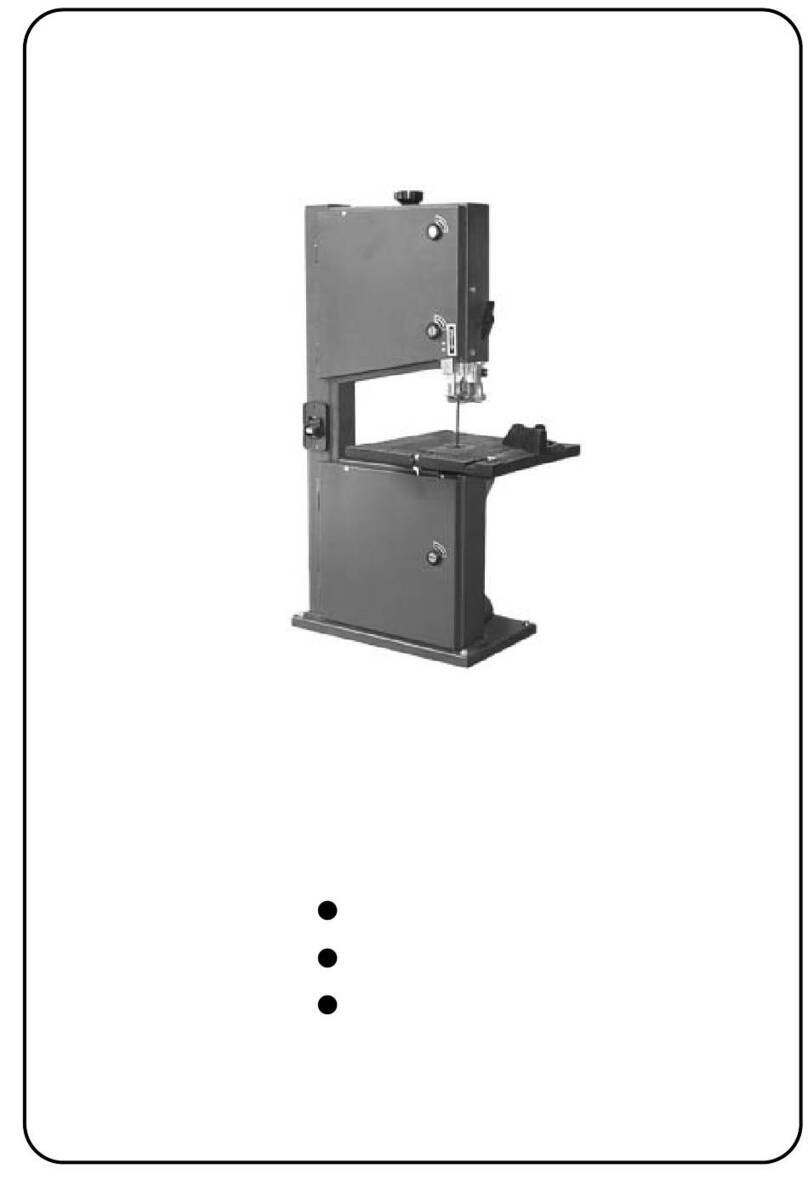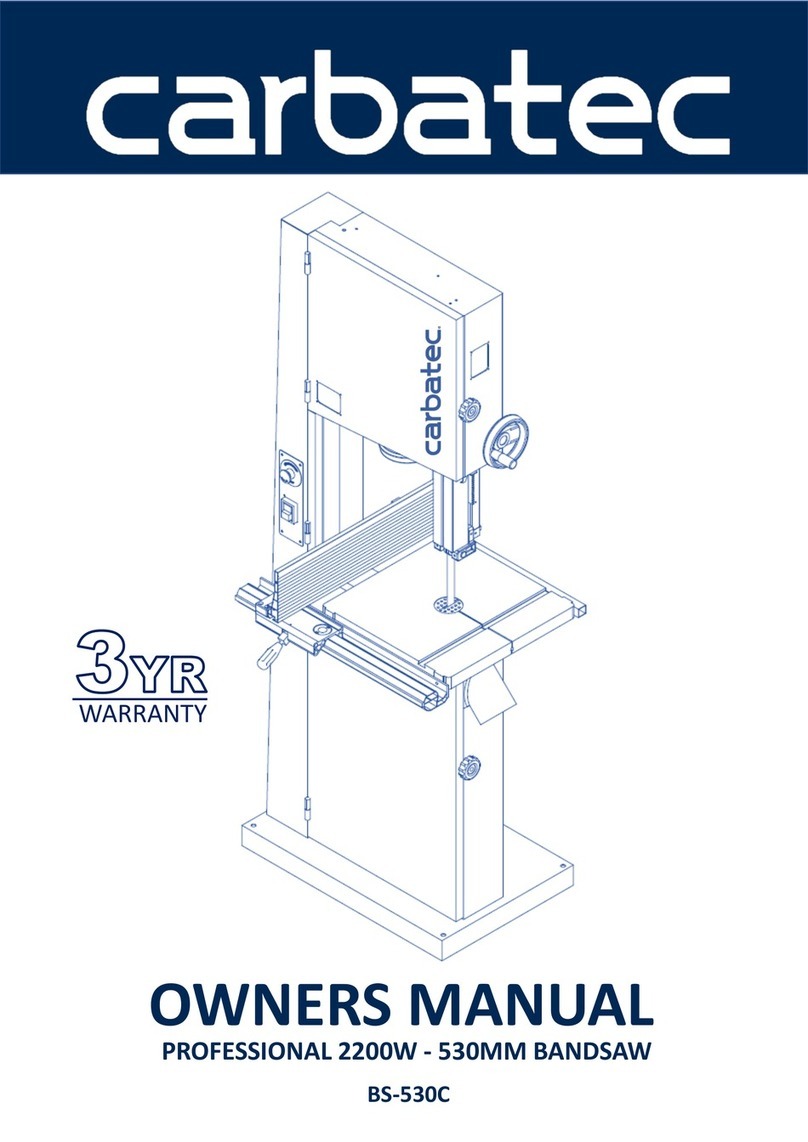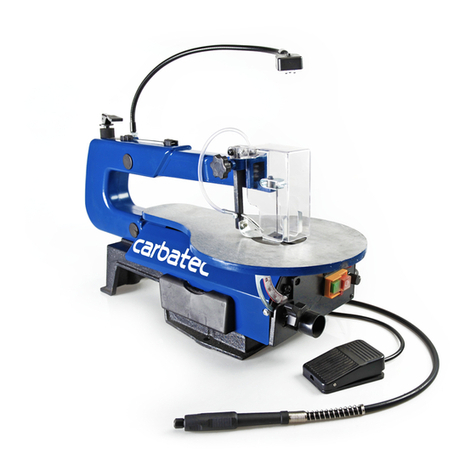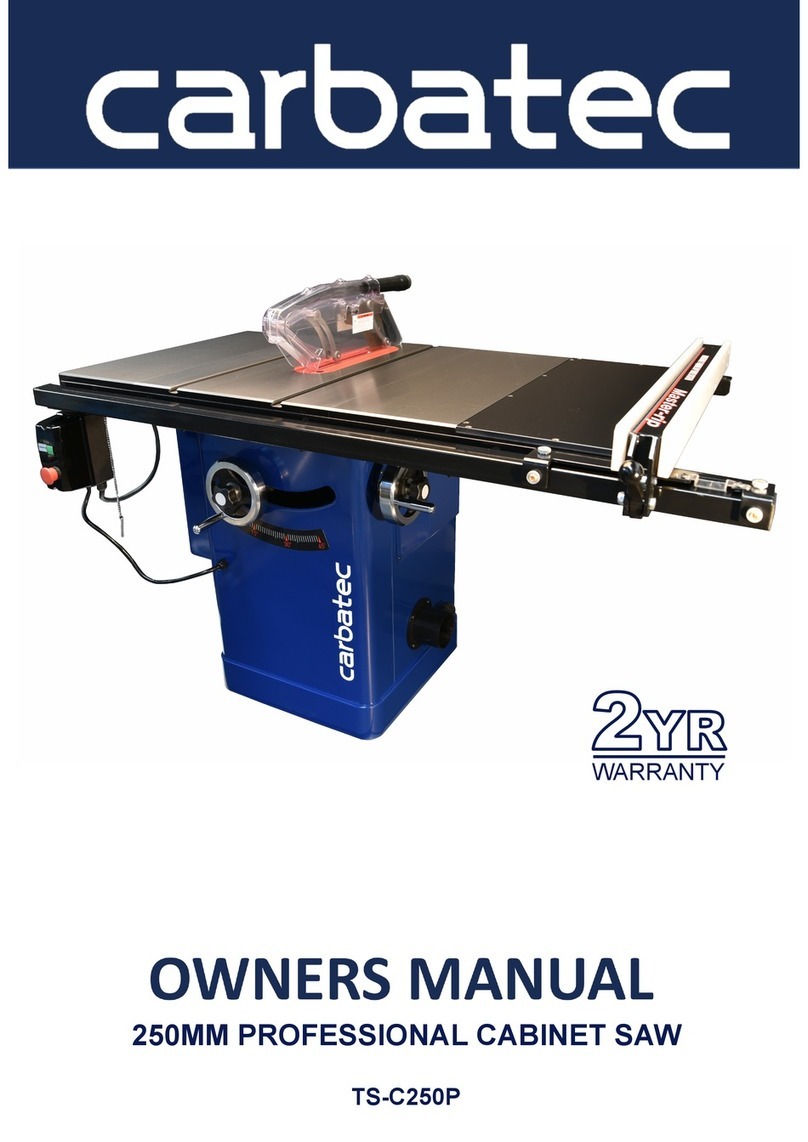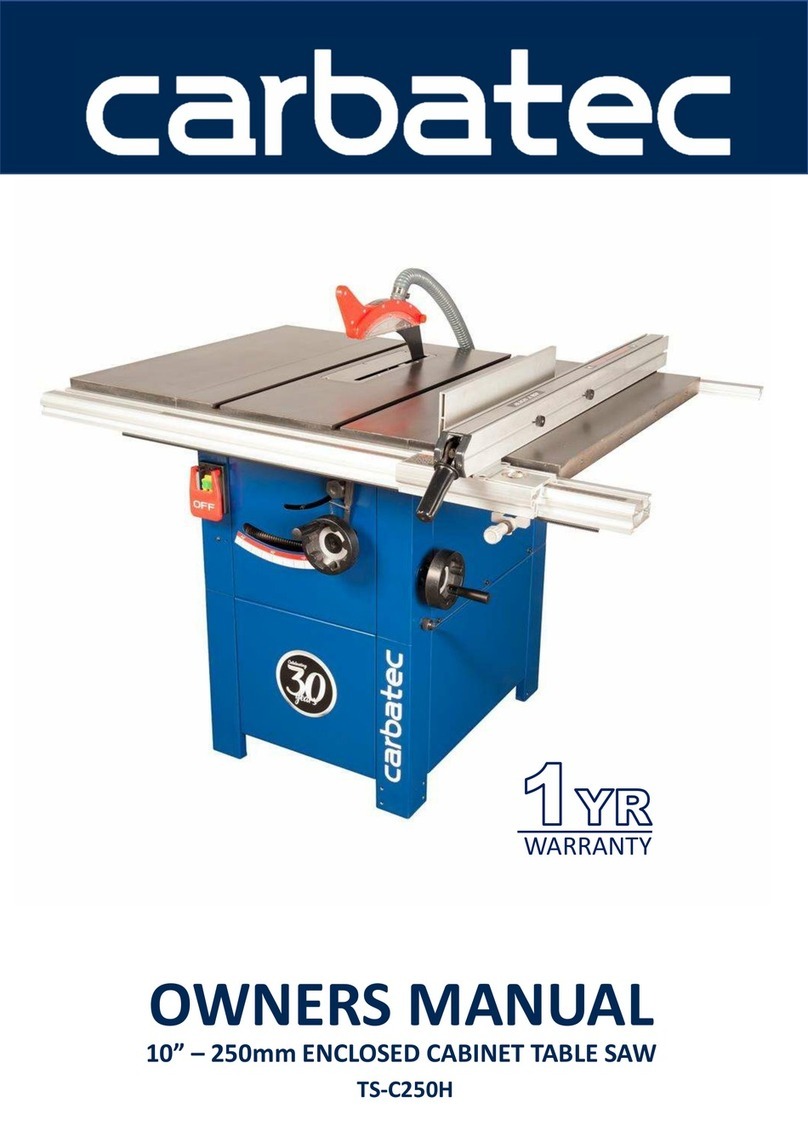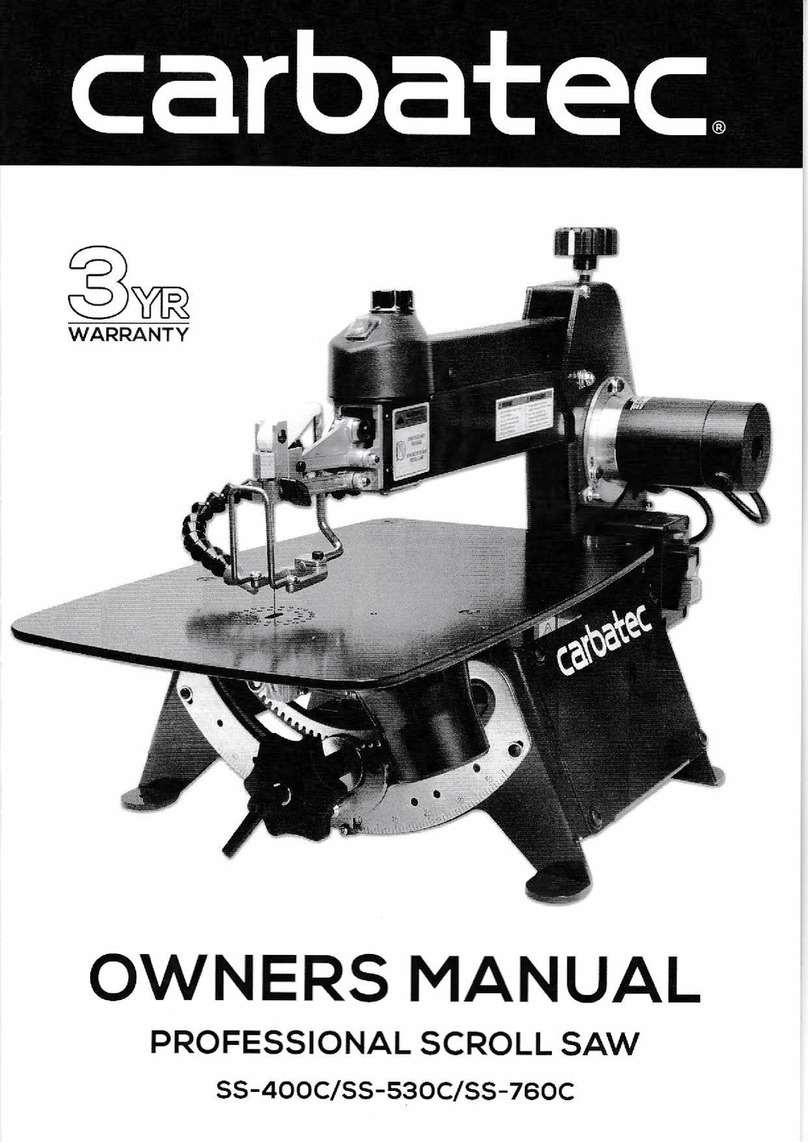www.carbatec.com.au
Safety
WARNING
Safety Instructions For Table Saws
6
1SAFETY G ARDS. Always use the blade guard,
splitter, or riving knife on “through-sawing”
operations. The blade cuts completely through
the top of the workpiece on through-sawing
operations. Always use a riving knife for non-
through cuts.
13 C TTING CORRECT MATERIAL. This machine is
intended for cutting natural and man-made wood
products, and some plastics. this machine is NOT
designed to cut metal, glass, stone, tile, etc. Cutting
these materials with a table saw may lead to injury.
2KICKBACK. Be familiar with kickback. Kickback
happens when the workpiece is thrown toward
the operator at a high rate of speed. Until you
have a clear understanding of kickback and how
it occurs, DO NOT operate this table saw.
14 EXPERIENCING DIFFIC LTIES. If at any time you
are experiencing difficulties performing the intended
operation, stop using the machine! Contact our
service department.
3REACHING OVER SAW BLADE. Never reach
behind or over the blade with either hand while
the saw is running; hands or arms could be
pulled into the saw blade if kickback occurs.
15 MAINTAIN MACHINERY WITH CARE. Keep blades
sharp and clean for best and safest performance. Fol-
low instructions for lubricating and changing acces-
sories.
4WORKPIECE CONTROL. Make sure the
workpiece is stable on the table and is supported
by the rip fence or the mitre gauge during cutting
operations. DO NOT perform any cutting
operations free-hand.
16 MAKE S RE G ARDS ARE IN PLACE AND WORK
CORRECTLY BEFORE SING MACHINERY.
5SAFETY ACCESSORIES. Use push sticks, hold-
downs, featherboards, and othe devices to
increase cutting safety.
17 REMOVE ADJ STING KEYS AND WRENCHES.
Make a habit of checking for keys and adjusting
wrenches before turning machinery ON.
6OPERATOR POSITION. Never stand or have
any part of your body directly in-line with the
cutting path of the saw blade. Avoid operations
and hand positions where a slip could cause
your hand to move into the blade.
18 CHECK FOR DAMAGED PARTS BEFORE SING
MACHINERY. Check for binding or misaligned parts,
broken parts, loose bolts, and any other conditions
that may impair machine operation. Repair or replace
damaged parts before operation.
7C T-OFF PIECES. Turn saw OFF before
removing small workpiece cut-offs.
19 SE RECOMMENDED ACCESSORIES. Refer to the
instruction manual for recommended accessories. Im-
proper accessories increase risk of injury.
8CROSSC TTING OPERATIONS. Remove the
rip fence whenever using the mitre gauge to
crosscut a workpiece.
20 DO NOT FORCE MACHINERY. Work at the speed
for which the machine or accessories was designed.
9BLADE HEIGHT. Always adjust the blade to the
proper height above the workpiece. Like all machinery there is potential danger when
operating this machine. Accidents are frequently caused
by lack of familiarity or failure to pay attention. Use this
machine with respect and caution to reduce the possibility
or operator injury. If normal safety precautions are
overlooked or ignored, serious personal injury may occur.
No list of safety guidelines can be complete. Every shop
environment is different. Always consider safety first, as
it applies to your individual working conditions. Use this
and other machinery with caution and respect. Failure to
do so could result in serious personal injury, damage to
equipment, or poor work results.
10 WORKPIECE S PPORT. Provide adequate
support to the rear and sides of the saw table for
wide or long workpieces.
11 DAMAGED SAW BLADES. Never use blades
that have been dropped or otherwise damaged.
12 DADO AND RABBET OPERATIONS. Dado and
rabbeting operations require special attention
because those operations must be performed
with the blade guard removed. Always use a
riving knife for dado and rabbeting operations,
and always immediately replace the blade guard
after operations are complete.

